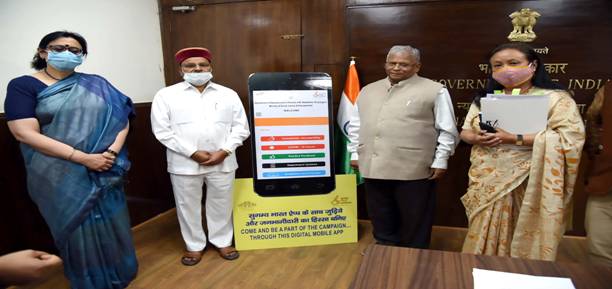What the Heck Is "NNM" National Nutrition Mission?
The National Nutrition Mission (NNM), also known as Rashtriya Poshan Mission has been launched by the government of India with three year budget of 9046.17 crore rupees. The scheme was commenced from 2017-18. National Nutrition Mission as an apex body under the Ministry of Women and Child Development will supervise, monitor, fix targets and guide nutrition-related interventions all over the Ministries. It will also monitor an assortment of schemes contributing towards addressing malnutrition in India. 50% of the NNM will be funded by the Government Budgetary Support and 50% will be funded by International Bank for Reconstruction and Development (IBRD, also known as World Bank). The Government budgetary support would be 60:40 between Centre and States/UTs, 90:10 for Northeast region and the Himalayan States, and 100% for UTs without legislature. National Nutrition Mission will bring in the measurement of the height of children at the Anganwadi Centres (AWCs). The scheme will assist to conduct Social Audits. It will also set up Nutrition Resource Centres, which will involve masses through Jan Andolan for their participation on nutrition throughout various activities, among others.
01-December-2017 13:39 IST ! bPress Information Bureau ! Government of India! Cabinet
Cabinet approves setting up of National Nutrition Mission
The Union Cabinet chaired by Prime Minister Shri Narendra Modi yesterday has approved setting up of National Nutrition
Mission (NNM) with a three-year budget of Rs.9046.17 crore commencing from 2017-18.
Features:
- The NNM, as an apex body, will monitor, supervise, fix targets and guide the nutrition-related interventions across the Ministries.
- The proposal consists of mapping of various schemes contributing towards addressing malnutrition
- introducing a very robust convergence mechanism
- ICT based Real-Time Monitoring system
- incentivizing States/UTs for meeting the targets
- incentivizing Anganwadi Workers (AWWs) for using IT-based tools eliminating registers used by AWWs
- introducing measurement of the height of children at the Anganwadi Centres (AWCs)
- Social Audits
- setting up Nutrition Resource Centres, involving masses through Jan Andolan for their participation in nutrition through various activities, among others.
Major impact:
The program through the targets will strive to reduce the level of stunting, under-nutrition, anemia, and low birth weight babies. It will create synergy, ensure better monitoring, issue alerts for timely action, and encourage States/UTs to perform, guide, and supervise the line Ministries and States/UTs to achieve the targeted goals.
Benefits & Coverage:
More than 10 crore people will be benefitted from this program. All the States and districts will be covered in a phased manner i.e. 315 districts in 2017-18, 235 districts in 2018-19, and remaining districts in 2019-20.
Financial Outlay:
An amount of Rs. 9046.17 crore will be expended for three years commencing from 2017-18. This will be funded by Government Budgetary Support (50%) and 50% by IBRD or other MDB. Government budgetary support would be 60:40 between Centre and States/UTs, 90:10 for NER and the Himalayan States, and 100% for UTs without legislature. Total The government of India's shares over a period of three years would be Rs. 2849.54 crore.
Implementation strategy and targets:
Implementation strategy would be based on intense monitoring and Convergence Action Plan right up to the grass-root level. NNM will be rolled out in three phases from 2017-18 to 2019-20. NNM targets to reduce stunting, undernutrition, anemia (among young children, women and adolescent girls) and reduce low birth weight by 2%, 2%, 3%, and 2% per annum respectively. Although the target to reduce Stunting is at least 2% p.a., Mission would strive to achieve a reduction in Stunting from 38.4% (NFHS-4) to 25% by 2022 (Mission 25 by 2022).
Background:
There are a number of schemes directly/indirectly affecting the nutritional status of children (0-6 years age) and pregnant women and lactating mothers. In spite of these, the level of malnutrition and related problems in the country is high. There is no dearth of schemes but a lack of creating synergy and linking the schemes with each other to achieve a common goal. NNM through robust convergence mechanisms and other components would strive to create synergy.
Official Portal:https://icds-wcd.nic.in/nnm/home.htm
What's Your Reaction?










































































